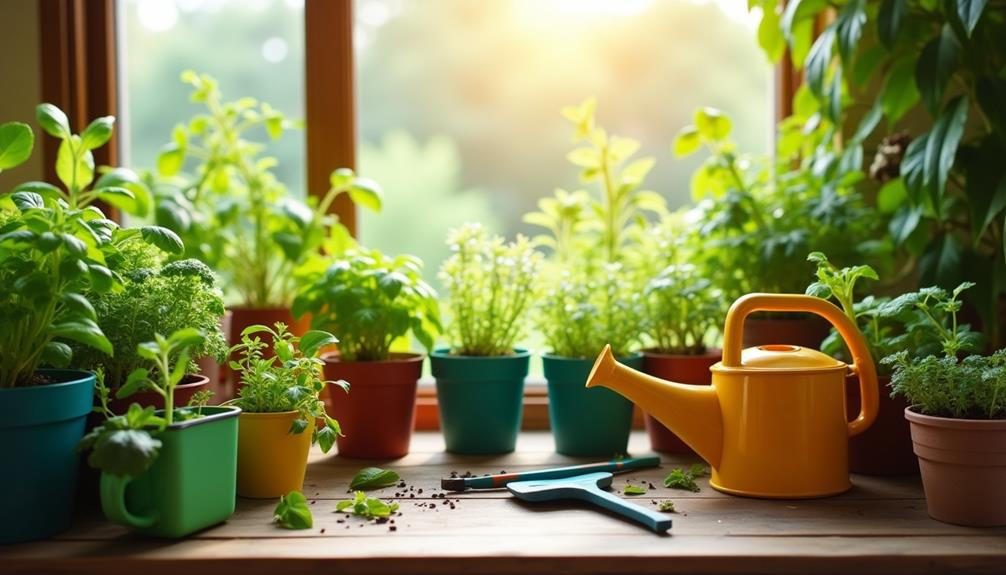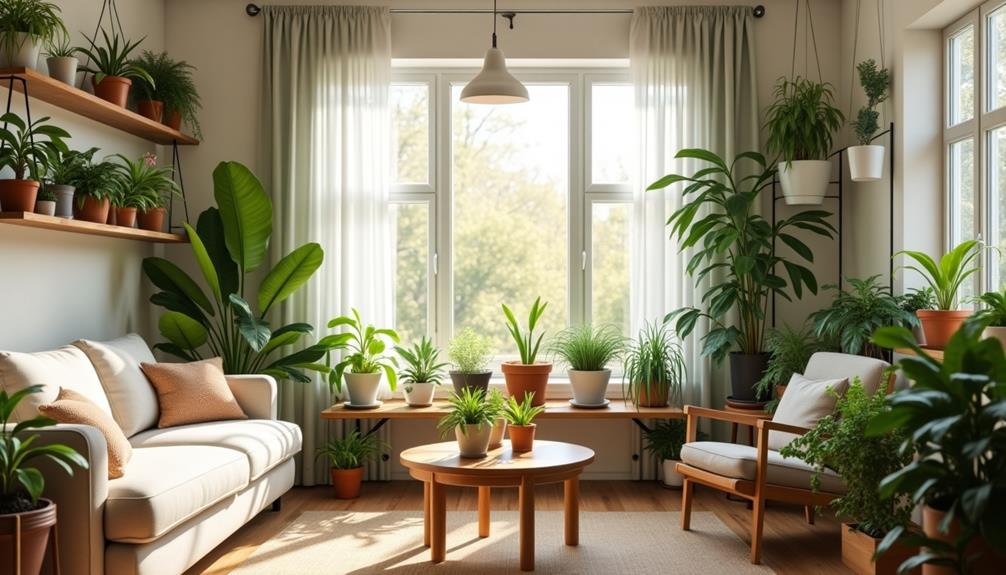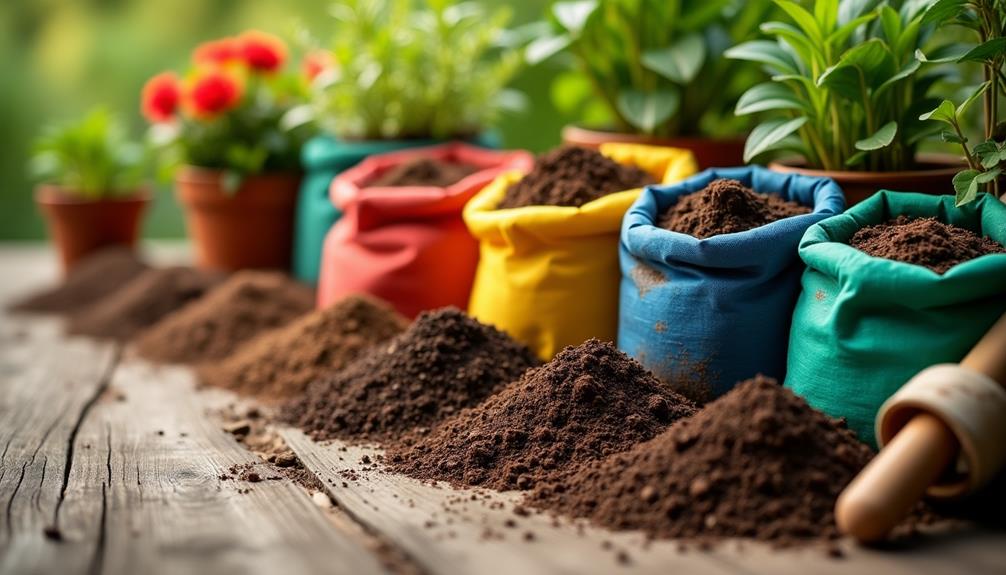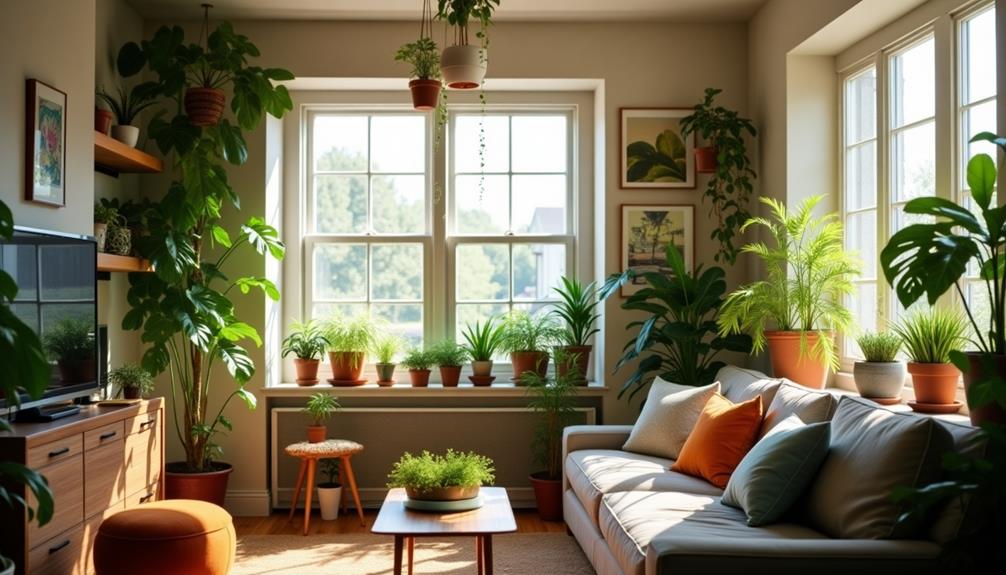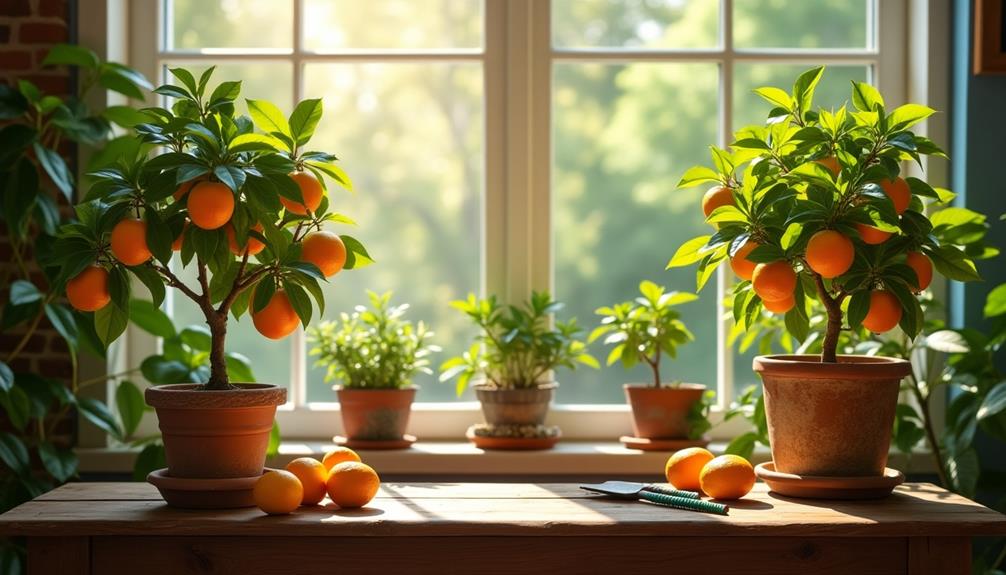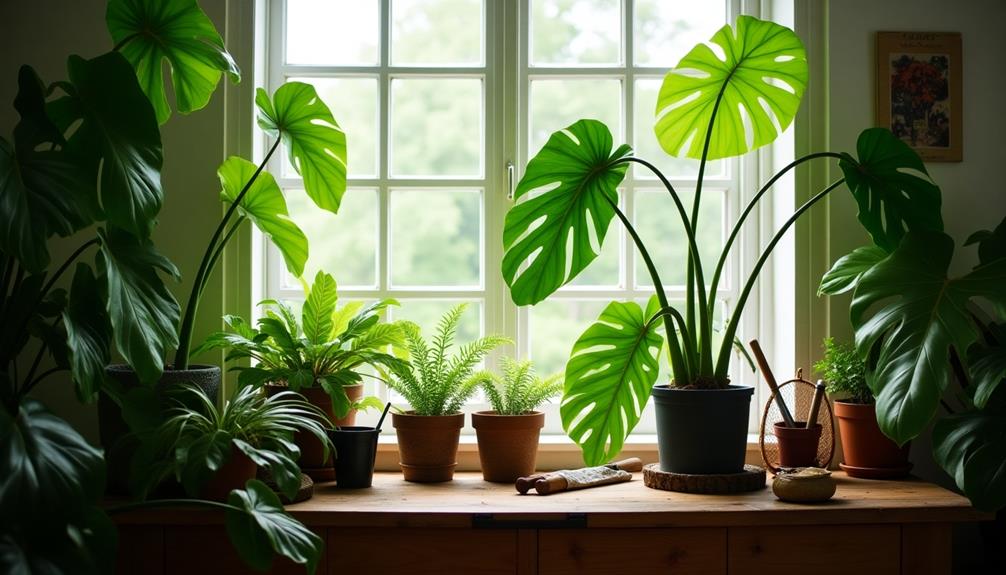Indoor gardening can be a breath of fresh air in your home, transforming mundane spaces into vibrant oases. You might wonder how to start this green journey without feeling overwhelmed. Choosing the right plants and understanding their needs is crucial, yet many newcomers miss some key steps that could mean the difference between thriving plants and wilted leaves. So, what essentials should you gather, and how can you create ideal conditions for growth?
Benefits of Indoor Gardening

Indoor gardening offers numerous benefits that can transform your living space and enhance your well-being. By cultivating plants indoors, you not only add aesthetic beauty to your home but also improve your overall health.
Studies show that having plants around can reduce stress and anxiety, boost your mood, and even enhance your concentration. Just think about how calming it's to care for greenery; it provides a sense of accomplishment and connection to nature, even when you're indoors.
Moreover, indoor plants can significantly improve air quality. They act as natural air purifiers, absorbing toxins and releasing oxygen, which contributes to a healthier living environment.
This environmental impact is vital, especially in urban settings where pollution levels can be high. You'll find that plants can help regulate humidity and reduce airborne pollutants, leading to better respiratory health and fewer allergies.
In essence, embracing indoor gardening not only enriches your space but also nurtures your health and well-being. As you integrate plants into your home, you'll be creating a sanctuary that benefits both you and the environment.
Choosing the Right Plants
Selecting the right plants for your indoor garden can truly elevate your space and enhance your experience. Start by considering your environment.
Do you have bright, indirect light, or is your space a bit shadier? This will help you narrow down your plant choices.
If you're interested in herb selection, think about the culinary herbs you love. Basil, mint, and parsley are excellent options that thrive indoors with proper care. Not only do they add flavor to your meals, but they also bring a fresh aroma to your space.
If you have pets, it's crucial to choose pet friendly plants. Look for options like spider plants, Boston ferns, and areca palms, which are safe for your furry friends.
Avoid plants like lilies or philodendrons, as they can be toxic to pets.
As you explore your options, consider the level of maintenance each plant requires. Some, like succulents, need less attention, while others might need more frequent watering and care.
Ultimately, the right plants won't only beautify your home but also create a thriving indoor garden that fits your lifestyle.
Essential Indoor Gardening Supplies
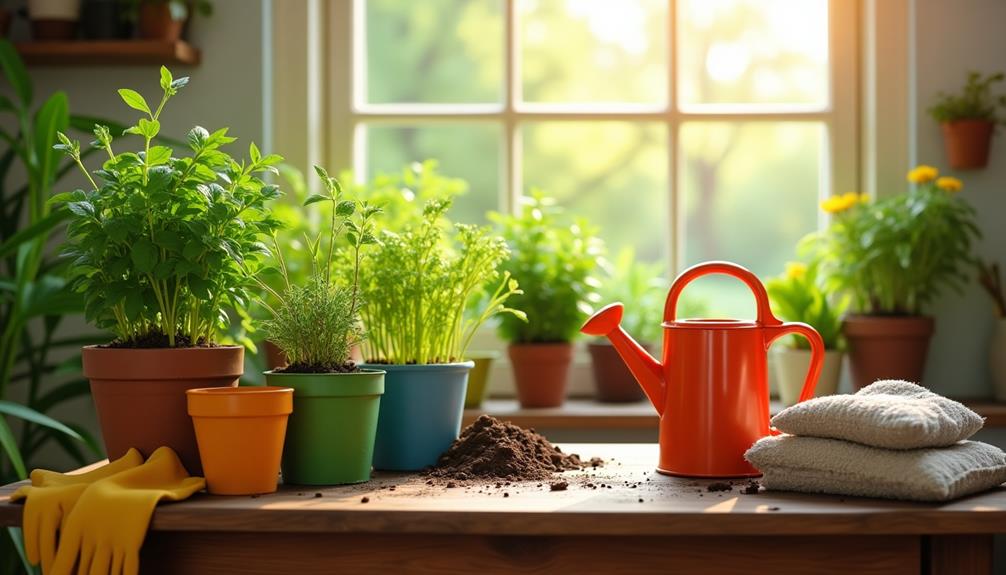
A sturdy pot filled with rich soil is just the beginning of your indoor gardening journey. To nurture your plants effectively, you'll need some essential supplies. First, invest in quality gardening tools. A trowel, pruning shears, and a watering can will make your tasks easier and more enjoyable.
Don't forget a pair of gardening gloves to protect your hands while you work.
Next, consider plant nutrients. Indoor plants often require additional nourishment since they're confined to pots. Look for a balanced fertilizer that meets the needs of your specific plants. This will promote healthy growth and vibrant foliage.
Good drainage is also crucial for your plants' health. Ensure your pots have drainage holes, and consider adding a layer of gravel or perlite at the bottom to help excess water escape. A moisture meter can be a handy tool, too, letting you know when it's time to water.
Lastly, keep a journal to track your plants' progress and any changes in care. With the right supplies in hand, you're well-equipped to create a thriving indoor garden that brings joy to your space.
Happy gardening!
Ideal Indoor Gardening Conditions
Creating the perfect environment for your plants is crucial to their success. First, consider the light requirements of your chosen plants. Most indoor plants thrive with bright, indirect sunlight, so placing them near a window can be beneficial.
However, if natural light is limited, you might want to invest in grow lights to ensure your plants receive adequate illumination. Remember that different plants have varying needs; some prefer low light, while others need more intense exposure.
Next, pay attention to humidity levels. Many indoor plants, especially tropical varieties, prefer higher humidity. If your home is dry, especially during winter, consider using a humidifier or placing a tray of water near your plants to increase moisture in the air.
Misting the leaves can also help, but be cautious not to overdo it, as excessive moisture can lead to mold or mildew.
Watering and Care Tips
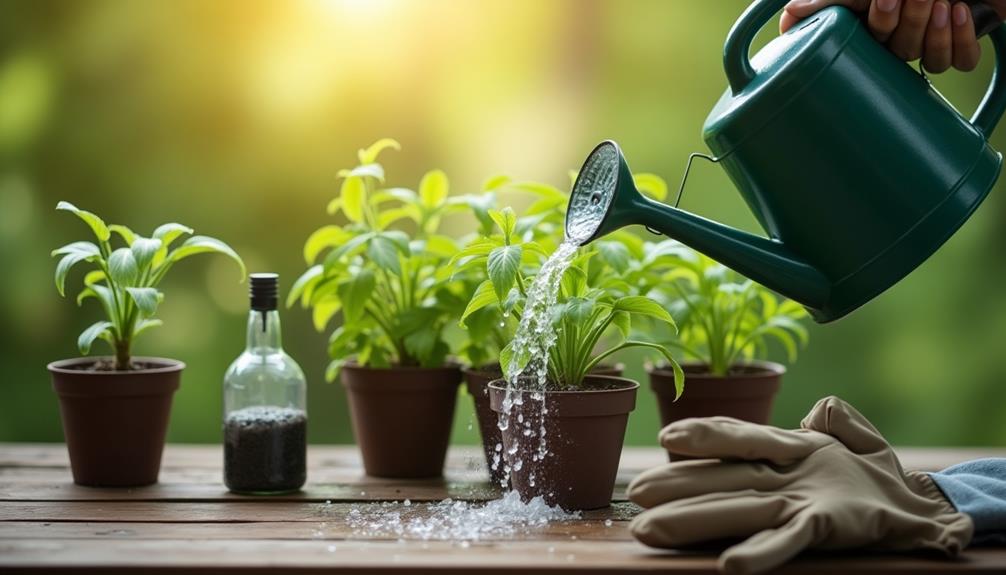
When it comes to indoor plants, understanding how often to water is crucial for their health.
You'll want to keep an eye on soil moisture levels and learn to recognize signs of overwatering.
With the right care, your plants will thrive and flourish in your indoor space.
Optimal Watering Frequency
Finding the right balance in watering your indoor plants is crucial for their health and growth. Overwatering can lead to root rot, while underwatering can cause wilting and stress. To determine the optimal watering frequency, consider the type of plant you have, the size of its pot, and the environment it's in.
Most indoor plants thrive with a consistent watering schedule, typically every 1-2 weeks. However, factors like humidity and temperature can affect this frequency. Use proper watering techniques, such as checking the top inch of soil for dryness before you water. If it feels dry, it's time to give your plant a drink.
When you water, ensure that you soak the soil thoroughly, allowing excess water to drain out the bottom. This promotes deep root growth and better plant hydration.
Soil Moisture Levels
Monitoring soil moisture levels is key to maintaining healthy indoor plants. To ensure your plants thrive, you'll want to strike the right balance between underwatering and overwatering. One useful tool is a soil moisture sensor. These devices can help you gauge when your plants need water, making it easier to avoid guesswork.
When you water, consider the soil's moisture retention properties. Some soils retain moisture better than others, so knowing your plant's specific needs is crucial. For instance, succulents prefer fast-draining soil that dries out quickly, while tropical plants often thrive in soil that retains moisture.
Check the top inch of soil before watering; if it feels dry, it's time to give your plant a drink. Conversely, if the soil is still damp, hold off a bit longer. Remember, the goal is to keep the soil consistently moist but not soggy.
Keep an eye on environmental factors too—light, temperature, and humidity can all affect moisture levels. By monitoring soil moisture diligently, you'll create an optimal environment for your indoor garden to flourish.
Signs of Overwatering
One of the most common mistakes indoor gardeners make is overwatering their plants. Recognizing the signs of overwatering can save your plants from stress and potential death. One of the first indicators is leaf yellowing. If you notice the leaves turning yellow and dropping off, it might be a signal that you're giving your plants too much water.
Another sign to watch for is root rot, which occurs when the roots sit in soggy soil for too long. If you pull your plant from its pot and see dark, mushy roots instead of firm, white ones, it's likely suffering from root rot.
To avoid these issues, always check the top inch of the soil before watering. If it feels damp, hold off on watering until it dries out.
Adjust your watering schedule based on the seasons and the specific needs of each plant. Remember, it's better to underwater than to overwater.
Troubleshooting Common Issues
Indoor gardening can be a rewarding experience, but it often comes with its fair share of challenges. One common issue you might face is pest infestations. To tackle this, you'll want to implement effective pest management strategies.
Start by regularly inspecting your plants for signs of pests like aphids or spider mites. If you spot any, consider using natural remedies like neem oil or insecticidal soap to keep them at bay.
Another problem could be nutrient deficiencies. If you notice yellowing leaves or stunted growth, your plants mightn't be getting the nutrients they need. Check the potting soil and consider adding a balanced fertilizer every few weeks.
Be sure to follow the recommended dosage, as over-fertilizing can lead to other problems.
Additionally, adjusting your watering routine can help prevent these issues from escalating. Ensure your plants are getting the right amount of water, and always use pots with drainage holes to prevent waterlogged soil.

